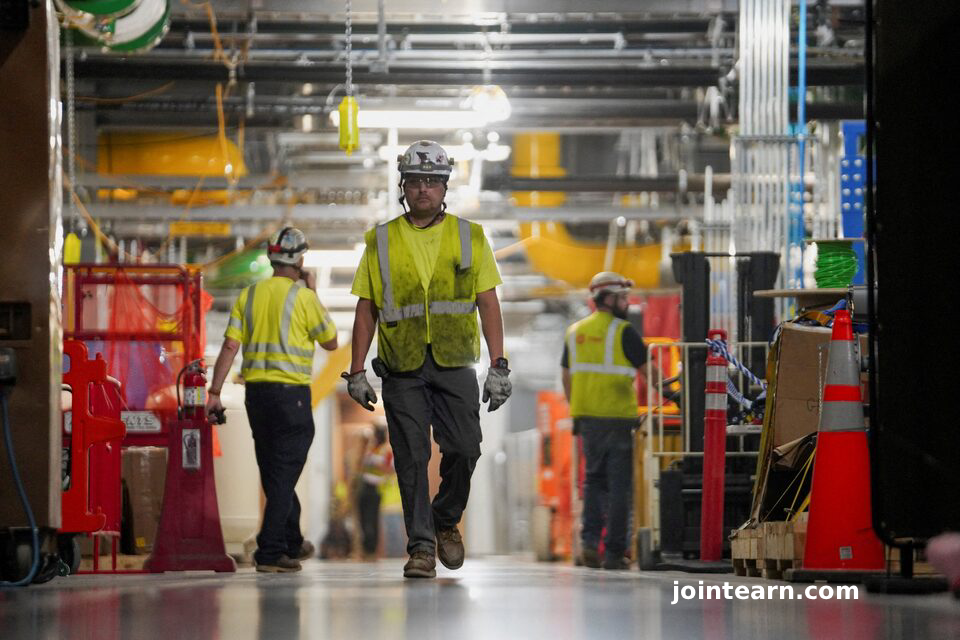
Big Tech’s Massive AI Spending Under the Microscope
October 29, 2025 (Reuters) — The AI-fueled stock market rally that has pushed the S&P 500 to record highs faces a critical test this week as investors look to fresh capital spending updates from U.S. tech giants including Microsoft, Alphabet, Meta, and Amazon.
These companies, collectively known as hyperscalers, are pouring hundreds of billions of dollars into artificial intelligence infrastructure, including data centers, cloud computing, and AI chips, in a move that could either reaffirm confidence in the AI boom—or expose cracks reminiscent of the late-1990s tech bubble.
“You want to still see that they are investing in these AI data centers and continuing to build,” said Don Nesbitt, Senior Portfolio Manager at F/m Investments. “If you start to see them falter, that’s a bellwether for the whole AI theme.”
Hyperscaler Capex Becomes Key Barometer of AI Market Confidence
Capital expenditures from Microsoft (MSFT), Alphabet (GOOGL), Meta (META), Amazon (AMZN), and Oracle (ORCL) have doubled between 2022 and 2024, exceeding $200 billion, according to Barclays. That figure is projected to soar to nearly $500 billion by 2027, underscoring the unprecedented scale of AI-related investment.
Wall Street will be scrutinizing management commentary from these companies’ Q3 2025 earnings reports, focusing on confidence levels, return on investment (ROI), and strategic vision for continued AI spending.
“The key to determining whether this might be a bubble probably sits with the same sign we got in the late ‘90s — wasteful capital spending,” warned Jeff Buchbinder, Chief Equity Strategist at LPL Financial.
Wall Street Watches for AI Capex Clues
While Microsoft, Alphabet, and Meta report results on Wednesday, Amazon follows on Thursday, setting the tone for market sentiment into November.
Investors are particularly keen to see whether these companies will sustain aggressive AI investments or begin to scale back spending amid concerns about overcapacity and slowing demand growth.
So far, the market remains eager for expansion:
“If the hyperscalers pared back their spending, it would signal they may not believe in the monetizable potential of these technologies,” said Nick Giorgi, Chief Equity Strategist at Alpine Macro.
Currently, the five biggest AI players are allocating 60% of their operating cash flow to capital expenditures, a record high, according to Torsten Slok, Chief Economist at Apollo Global Management.
Financial Health Separates Today’s AI Surge from Dot-Com Era
Unlike the dot-com bubble of the late 1990s, analysts say today’s AI hyperscalers enjoy stronger balance sheets and healthier margins.
- Free cash flow margins average 15%, compared to 3.5% for telecom firms that overbuilt fiber-optic networks two decades ago, according to Glenmede.
- The AI data center build-out is already generating tangible demand across sectors, from semiconductors to industrial construction and utilities.
“This year is an outlier — those deploying large-scale capex are outperforming significantly,” said Michael Reynolds, VP of Investment Strategy at Glenmede. “It’s getting to a scale where the demand thesis needs to come through.”
Ripple Effects: AI Spending Reverberates Across Markets
The five largest U.S. tech firms — Microsoft, Alphabet, Amazon, Meta, and Apple (AAPL) — along with Nvidia (NVDA) and Tesla (TSLA), make up the “Magnificent Seven,” representing roughly 35% of the S&P 500’s total market weight.
Nvidia, in particular, has become the face of the AI revolution, with its AI chip dominance driving its valuation past $4 trillion and placing it on track to reach $5 trillion in coming weeks.
Changes to the hyperscalers’ spending plans could ripple through global markets. Citigroup estimates that nearly half of the S&P 500’s market capitalization — spanning 80 major companies — has meaningful exposure to AI development and infrastructure.
According to Bespoke Investment Group, 28 AI-related stocks have accounted for one-third of the $48 trillion increase in global market capitalization since ChatGPT’s launch in 2022.
“AI capex spending is driving the data center build-out,” said Chuck Carlson, CEO of Horizon Investment Services. “That in turn boosts companies in industrials, construction, and utilities. The AI trade has so many tentacles.”
The Bottom Line: AI Confidence or AI Bubble?
As AI-driven spending continues at an extraordinary pace, Wall Street faces a balancing act between optimism and caution. Investors will look for signs that the AI infrastructure boom is producing sustainable returns, not speculative excess.
The next phase of the AI trade may depend less on hype and more on execution, efficiency, and profitability — testing whether this generation of tech giants can deliver on the massive expectations they’ve set.
Leave a Reply